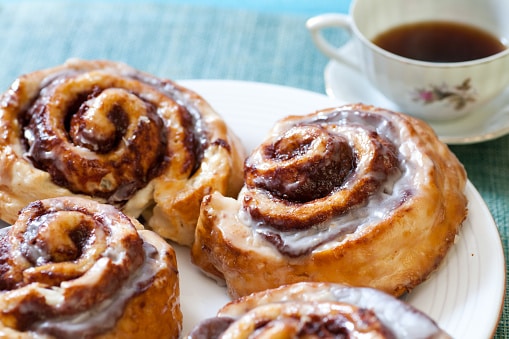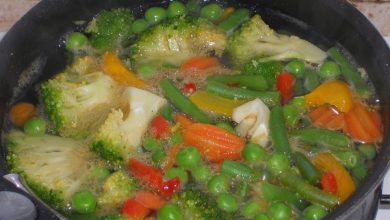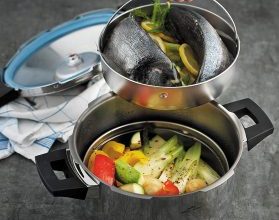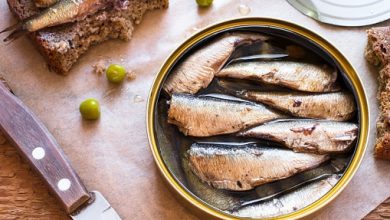Typical Swedish dishes: 14 recipes that you can’t stop trying

A very interesting way to learn about the culture of a country is to explore its gastronomy. The typical dishes of Sweden are usually distinguished by certain baked dishes and traditional spiced beers, but the reality is that, at a culinary level, what predominates in this Nordic country is the refined use of country ingredients, such as potatoes, mushrooms, berries, fish and livestock.
Perhaps you have a trip to Swedish lands in mind and you want to get an idea of what you might find in local food restaurants, or you are simply curious to know what the typical Swedish recipes will be like. Regardless of your case, here I describe some of the typical dishes of Sweden, you may already know some, but surely some others will surprise you.
Köttbullar
This dish is an icon of Swedish cuisine, it could even be considered the number one recipe in the gastronomy of this European country. In its most traditional form, it is a recipe consisting of meatballs in a blueberry sauce, peas and a smooth mashed potatoes. You may also find a version in which the meatballs are made from fish meat, which is called fiskbullar.
Knäckebröd
This is the name of a crusty bread that can be found in many countries of the world, but its origin is in Sweden. It was born approximately 500 years ago, at that time the Nordic natives looked for a way to make the scarce rye that they managed to harvest in the year last during the winter. This bread is extremely hard thanks to its high baking temperature, 400 ° C. It is tradition to accompany it with butter and some cheese.
Semla
In southern Sweden and parts of Finland it is known as fastlagsbulle. The recipe is for a sweet muffin that is used as the base for various side dishes. Nowadays, the most common thing is to find it cut in half, filled with a cream that results from the mixture between milk and almond paste, and with a generous amount of whipped cream.
Surströmming
This is a dish that you certainly won’t be able to ignore wherever you find it, and I’m not saying that because of its looks. You will not be able to ignore it for its intense smell that impacts both tourists and locals. It is a can of fermented sour harengue, which is traditionally opened in the middle of the third quarter of the year since it began to be made in the 19th century. It is often used to fill a crusty Swedish bread called tunnbröd, accompanied by some potatoes, onions in rings and butter.
Chair
This is a very popular recipe in Swedish summers, it consists of pickled arengue which is flavored with mustard, onion or garlic. Typically, it is served with potatoes, sour cream, cheese, and hard-boiled eggs. A slightly more modern version changes the harangue for one that is smoked or even fried.
Kanelbullar
This in a bun that you can commonly find in many bakeries around the world, but the reality is that none compares with the one made by its creators, the Swedes. This cinnamon roll is so special for Sweden that they dedicate a whole day to it called Kanelbullens Dag; Every October 4 he is honored, accompanying him with a cup of coffee in every home and every street in the Scandinavian country.

Smålandsk Ostkaka
This is another of the Swedish desserts that have their special day on the calendar, November 14. The recipe consists of a delicious cheesecake that is traditionally served hot accompanied by some red fruit jam and cream. Some replace the cream with fruit or even ice cream.
Ärtsoppa med pannkakor
Characterized for being a dish to share with the family between weeks, especially on Thursdays. This pea soup with pancakes has many stories surrounding its origin; some prefer to attribute it to a religious theme, while others think it has to do with the routines of the lower social classes.
Gravad Lax
The recipe is basically thin strips of salmon that are marinated and refrigerated for several days and then eaten accompanied by a somewhat sweet cold sauce based on mustard and dill, with a salad or a little bread.
Its origin is something much more rudimentary, what the natives did was marinate the salmon in salt, sugar and dill, then it was introduced into the earth and covered with more earth and some stones to let them dry and ferment for at least 3 days, which made it last several more days without breaking down.
Smörgåstårta
This dish is also common to see in countries like Finland, Estonia and Iceland. It consists of a cake that resembles a large sandwich, it has a generous amount of filling and garnishes around it. You can see it decorated with seafood, herbs, pieces of hard-boiled egg and cucumber slices.
Pyttipanna
Pyttipanna is a dish consisting of fried eggs, rye bread and beets. It has great popularity and it is very common to see that Swedes consume it for breakfast or as a snack.
Filmjölk
It is a kind of yogurt, although it really is milk fermented with different cultures of bacteria and processed at temperatures lower than those of yogurt. It is a very popular drink in neighboring countries within the Scandinavian region, but for the Swedish population, filmjölk is consumed on a daily basis.
Räksmörgås
It is normal to see in Sweden what is known as an open sandwich. In this case, it’s one made with shrimp, boiled egg wheels, tomatoes and cucumbers, lettuce, and a dill sauce on top of it all. This type of sandwich is born from the use that was given to the slices of bread as a kind of improvised plate.
Kräftor
This dish went from being exclusive to the Swedish elite to a delicacy consumed by all in a popular way. This is nothing more than crayfish, which are abundant in that area of Scandinavia. Its consumption is so massive that there are festivals called kräftskivor, in which people congregate to eat thousands of these crabs at the end of the summer.


